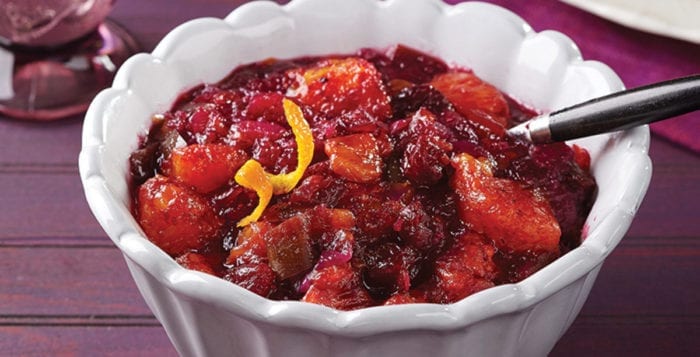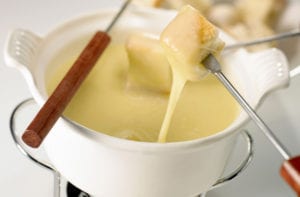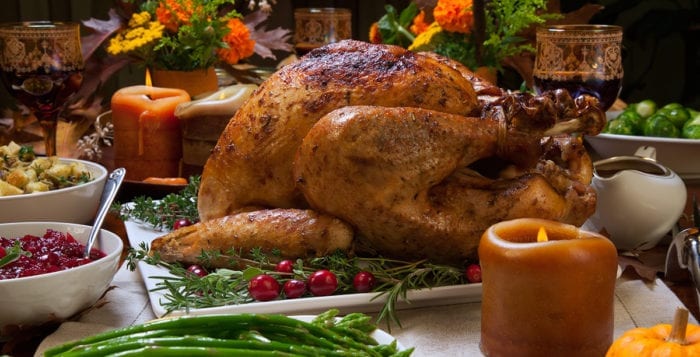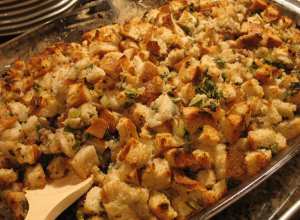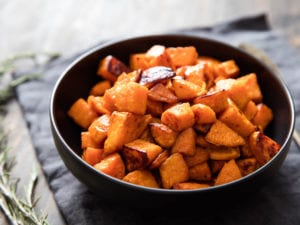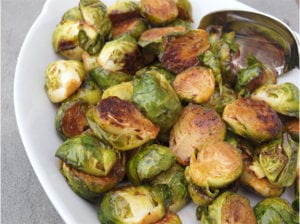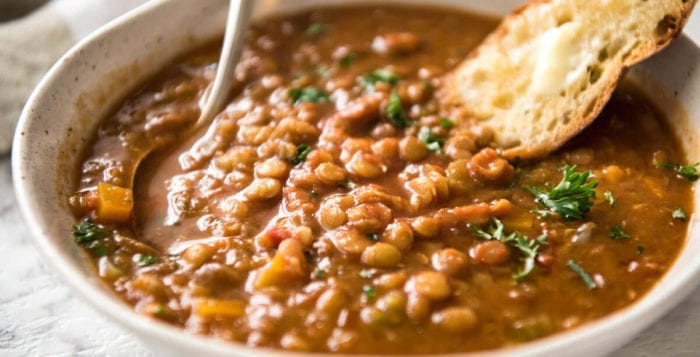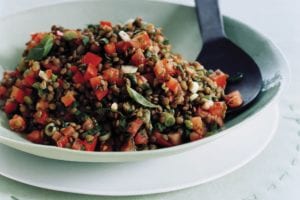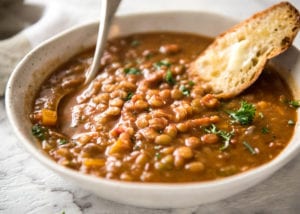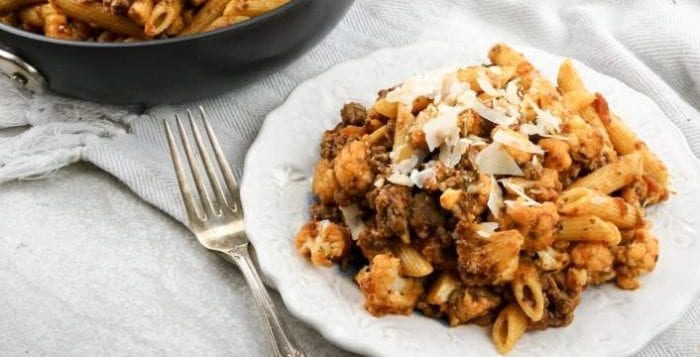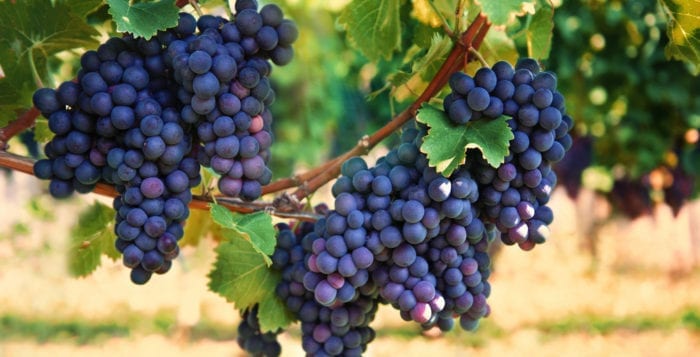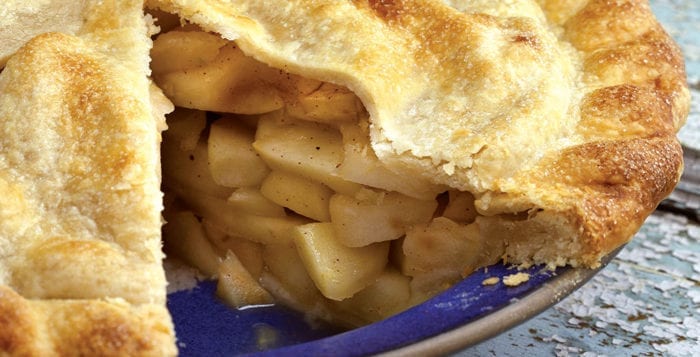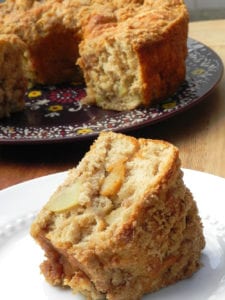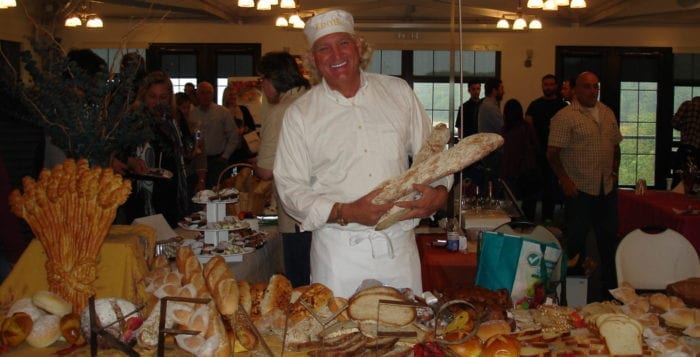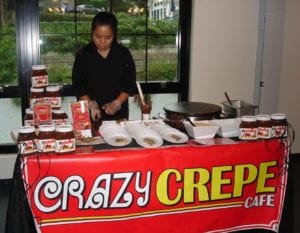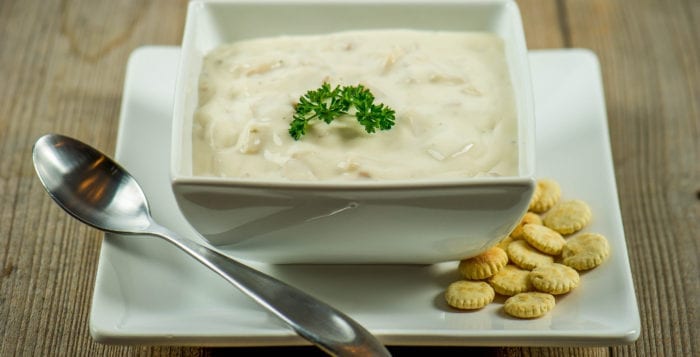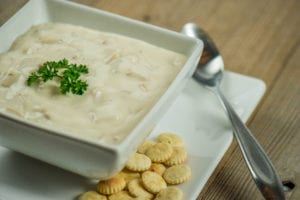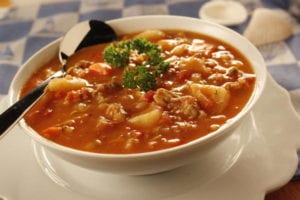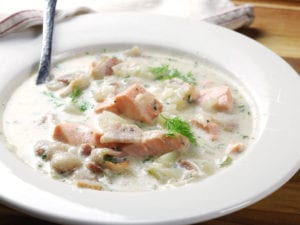By Barbara Beltrami
Once Thanksgiving is over and the turkey is just a carcass in a soup pot, and the fixings are just unidentifiable messes in plastic containers, there is still a whole month and beyond in which to take advantage of fresh cranberries, those little ruby-red gems that are in seasonal abundance. Rich in vitamin C, cranberries are not just a life-support system for a sauce. They make a fabulous pie, a delicious chutney and a moist and dense tea loaf — all perfect for holiday entertaining. And …. the tea loaf is an excellent gift from your kitchen as well.
No time to cook now? Buy them anyway and freeze them for the next occasion when you need something special. (They can be frozen for up to a year.) When you scavenge around and find them in the frosty recesses of your freezer right behind the turkey soup that was rejected in favor of a pizza, you’ll be happy to have stashed such a treasure.
Cranberry Walnut Pie

YIELD: Makes 6 to 8 servings
INGREDIENTS:
Pastry for two-crust 9-inch pie
3 cups cranberries, halved
½ cup walnuts, finely chopped
1 cup raisins
1 cup sugar
2 tablespoons flour
Dash salt
Half a stick of unsalted butter, cut into six pieces
DIRECTIONS: Line a 9-inch pie dish with one pastry crust. In a medium bowl mix together the cranberries, walnuts raisins, sugar, flour and salt and turn into pastry-lined dish and dot evenly with butter. Cut remaining pastry crust into ¾-inch-wide strips and make a lattice across the top of the cranberry mixture. Bake at 425 F for 40 to 50 minutes, until crust is golden and filling is bubbly. Serve warm with vanilla or rum raisin ice cream or whipped cream.
Cranberry Chutney
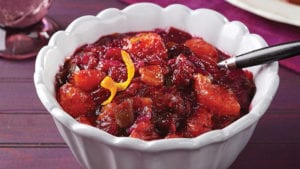
YIELD: Makes 4 to 5 cups
INGREDIENTS:
½ cup cider vinegar
½ cup brown sugar
3 cups fresh whole cranberries
3 fresh pears, peeled, cored and chopped
1 cup drained canned pineapple chunks
1 cup dried figs, chopped
1 red onion, finely chopped
½ cup orange juice
1 tablespoon peeled chopped fresh ginger root
1 tablespoon prepared grainy mustard
1 tablespoon grated orange rind
2 cinnamon sticks
¼ teaspoon ground cloves
Pinch of salt
DIRECTIONS: In a large saucepan, heat vinegar and sugar to boiling point. Lower heat and simmer 5 minutes; add cranberries, pears, pineapple, figs, onion, orange juice, ginger, mustard, orange rind, cinnamon, cloves and salt. Continue to simmer half an hour, until cranberries burst their skins and mixture is thickened. Remove from heat. Cover and refrigerate until ready to use. Serve warm or at room temperature with pork, ham, fowl, game or any soft cheese.
Cranberry-Citrus Tea Loaf
 YIELD: Makes one 9- × 5- × 3-inch loaf
YIELD: Makes one 9- × 5- × 3-inch loaf
INGREDIENTS:
2 cups flour
1 cup sugar
1½ teaspoons baking powder
1 teaspoon salt
½ teaspoon baking soda
1 egg, well beaten
½ cup grapefruit or orange juice
2 tablespoons vegetable, canola or sunflower oil
¼ cup Grand Marnier liqueur
1 cup fresh cranberries, coarsely chopped
½ cup chopped fresh pecans
1 teaspoon grated orange zest
1 teaspoon vanilla extract
¼ teaspoon orange extract
DIRECTIONS: Preheat oven to 350 F. Grease and flour a 9- × 5- × 3-inch loaf pan. Sift together the dry ingredients, then add the egg, juice, oil and liqueur. Stir to combine. Add cranberries, nuts, zest and extracts; mix thoroughly but do not overmix. Spread batter evenly in prepared loaf pan. Bake 50 minutes to one hour, until cake tester inserted in middle comes out clean. Cool 15 to 20 minutes; remove from pan when ready to serve. Serve with hot tea, coffee or chocolate with butter, orange sorbet, butter pecan or vanilla ice cr

